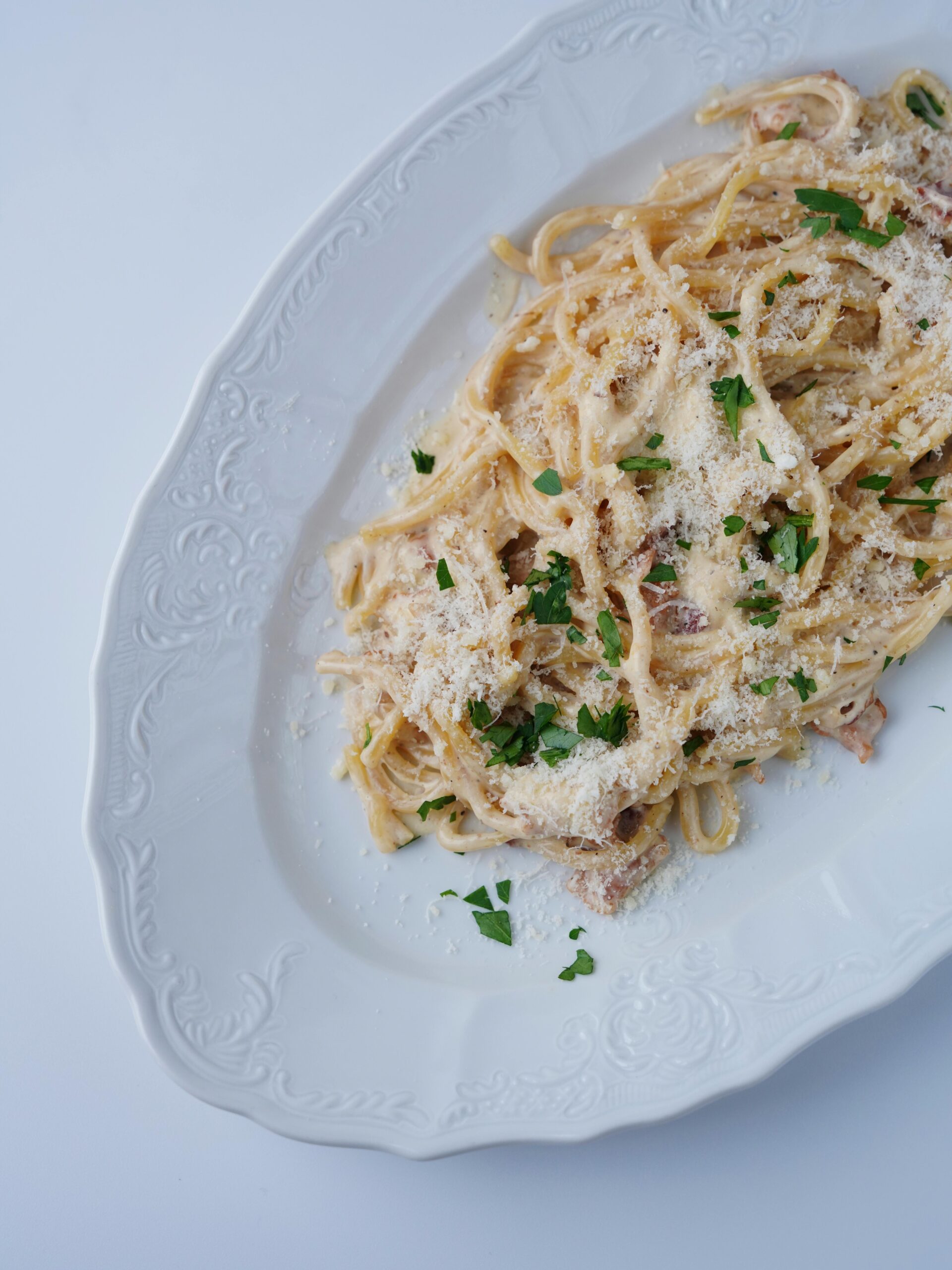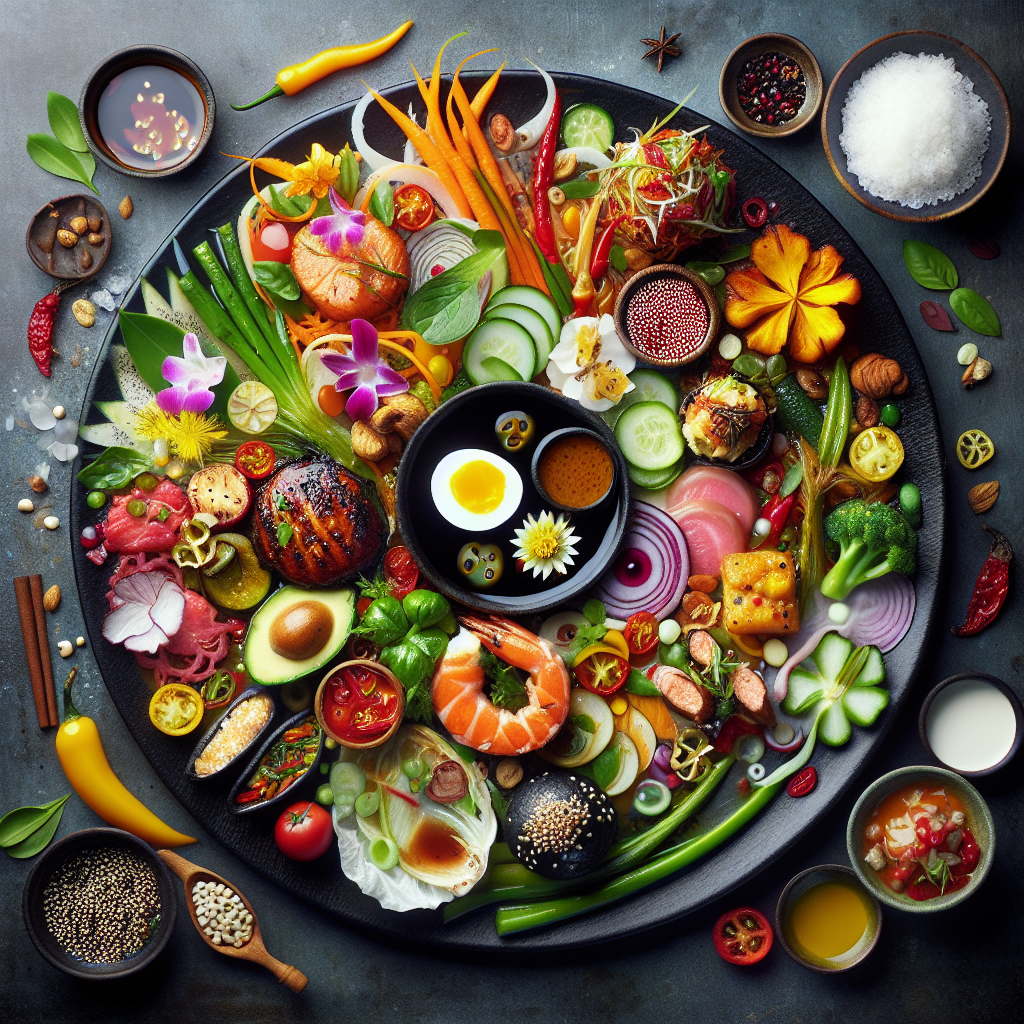Are you tired of the same old recipes and flavors? Are you craving something new and exciting to tantalize your taste buds? Look no further than fusion cuisine – the art of blending culinary traditions from around the world. Fusion cuisine takes the best of different cultures and combines them to create unique and innovative dishes that will leave you craving more. Whether it’s a fusion of Asian and Mexican flavors or a fusion of Mediterranean and Indian spices, the possibilities are endless. Get ready to embark on a culinary adventure like no other as you explore the world of fusion cuisine. At Tastepan.com, we have a vast collection of mouthwatering fusion recipes that will take your taste buds on a journey they’ll never forget. So grab your apron, gather your ingredients, and get ready to create culinary magic in your very own kitchen.

History of Fusion Cuisine
Origins of fusion cuisine
Fusion cuisine has a rich and diverse history that can be traced back centuries. The origins of fusion cuisine can be found in the trade routes and cultural exchanges that have occurred between different regions and countries throughout history. Through these interactions, ingredients, cooking techniques, and flavors have been introduced to new regions, giving rise to unique culinary creations.
Early examples of fusion cuisine
One of the earliest examples of fusion cuisine can be seen in the Silk Road trade, which connected Europe and Asia. As traders and explorers traveled along this route, they brought with them new ingredients and spices, resulting in the blending of flavors and cooking techniques. For instance, the cuisines of Southeast Asia, such as Thai and Indonesian, often incorporate Indian and Chinese influences, thanks to the historical interactions between these regions.
Another early example of fusion cuisine can be seen in the colonization and exploration of the Americas. The exchange of ingredients and culinary traditions between the Old and New Worlds resulted in the fusion of European, African, and indigenous American cuisines. The flavors and techniques introduced during this period laid the foundation for the vibrant and diverse fusion cuisine we see today.
Influences on Fusion Cuisine
Cultural influences
One of the key influences on fusion cuisine is the rich tapestry of cultures that exist around the world. Each culture has its own unique ingredients, cooking techniques, and flavor profiles that contribute to the creation of fusion dishes. Whether it’s the spices of India, the umami flavors of Japan, or the aromatic herbs of the Mediterranean, these cultural influences blend together to create exciting and innovative culinary creations.
Migration and globalization
Migration and globalization have played a significant role in shaping fusion cuisine. As people have moved from one place to another, they have brought their culinary traditions with them, leading to the blending of flavors and techniques. This has been particularly evident in cities with diverse populations, such as New York, London, and Melbourne, where the culinary landscape is a melting pot of different cuisines and cultures.
Cross-cultural collaborations
In addition to cultural influences and migration, cross-cultural collaborations between chefs have also contributed to the development of fusion cuisine. Chefs from different culinary backgrounds often come together to experiment and create unique dishes that combine the best of their respective traditions. This collaboration not only leads to culinary innovation but also fosters cultural understanding and appreciation.

Popular Fusion Food Trends
Asian Fusion Cuisine
Asian fusion cuisine has become incredibly popular in recent years. It combines the flavors and ingredients of various Asian cuisines, such as Chinese, Japanese, Thai, and Korean, to create exciting and bold dishes. From sushi burritos to bao tacos, Asian fusion cuisine offers a delightful blend of flavors and textures that are sure to tantalize your taste buds.
Mexican-Asian Fusion
The combination of Mexican and Asian flavors has also gained a following in the world of fusion cuisine. This unique fusion blends the bold spices and ingredients of Mexican cuisine with the umami flavors of Asian dishes. Think Korean barbecue tacos or Thai-inspired guacamole. The fusion of these two vibrant culinary traditions creates a harmonious balance of flavors that is both familiar and exciting.
Mediterranean Fusion
The Mediterranean region has a rich culinary heritage, and when combined with flavors and techniques from other cuisines, it creates a delightful fusion of Mediterranean fusion cuisine. Whether it’s Italian-Asian fusion or Middle Eastern-Mexican fusion, the Mediterranean base adds a touch of freshness and vibrancy to create unique and tantalizing dishes.
Latin-Indian Fusion
Latin-Indian fusion cuisine is another exciting trend that has been gaining popularity. This fusion combines the bold and spicy flavors of Latin American cuisine, such as ceviche and empanadas, with the rich and aromatic spices of Indian cuisine, such as curry and tandoori. The result is a fusion of flavors that is both familiar and unexpected, creating a culinary experience like no other.
Challenges and Criticisms of Fusion Cuisine
Cultural appropriation
One of the main challenges faced by fusion cuisine is the issue of cultural appropriation. When chefs borrow elements from different cultures without proper understanding or respect, it can lead to misrepresentation and the dilution of authentic culinary traditions. It is essential for chefs to approach fusion cuisine with sensitivity and a deep appreciation for the cultures they are drawing inspiration from.
Authenticity and tradition
Another criticism of fusion cuisine is the concern that it strays too far from traditional and authentic recipes. Some argue that fusion dishes can compromise the integrity of traditional cuisines by blending flavors and techniques that do not belong together. However, when done tastefully and with a deep understanding of the different culinary traditions, fusion cuisine can be a celebration of diversity and creativity.
Overcomplication of dishes
Fusion cuisine has the potential to become overly complicated, with chefs attempting to incorporate too many flavors and ingredients into a single dish. This can result in a confusing and overwhelming dining experience. It is important for chefs to strike a balance between innovation and simplicity, ensuring that the flavors and textures complement each other rather than compete for attention.

Benefits of Fusion Cuisine
Creativity and innovation
One of the major benefits of fusion cuisine is the freedom it offers chefs to experiment and create new and exciting dishes. Fusion cuisine encourages creativity and pushes the boundaries of traditional recipes, resulting in innovative and memorable dining experiences. Chefs have the opportunity to blend flavors in unexpected ways, creating dishes that are both delicious and visually stunning.
New flavor combinations
Fusion cuisine allows for the exploration of new flavor combinations that may not have been traditionally paired together. By combining ingredients and techniques from different culinary traditions, chefs can create unique and surprising taste profiles. This introduces diners to new and exciting flavors, expanding their culinary horizons and broadening their appreciation for different cuisines.
Exposure to different cultures
Fusion cuisine provides an opportunity for people to experience and learn about different cultures through food. By blending flavors and techniques from different culinary traditions, fusion dishes create a bridge between cultures, allowing diners to explore and appreciate the diversity of the global culinary landscape. This exposure to different cultures promotes cultural understanding and appreciation.
Famous Fusion Chefs
Roy Choi
Roy Choi is widely recognized as one of the pioneers of the food truck movement and Asian fusion cuisine. His fusion dishes, such as his legendary Korean tacos, have gained a cult following and have inspired a new generation of chefs to experiment with blending flavors and techniques from different culinary traditions.
Jean-Georges Vongerichten
Jean-Georges Vongerichten is a renowned French chef who has made a name for himself in the world of fusion cuisine. His innovative blending of French and Asian flavors has earned him critical acclaim and multiple Michelin stars. Vongerichten’s fusion dishes are known for their delicate balance of flavors and exquisite presentation.
Nobu Matsuhisa
Nobu Matsuhisa is a Japanese chef who is famous for his fusion of Japanese and Peruvian flavors. His signature dish, black cod with miso, has become an iconic fusion dish and is a staple on the menus of his globally renowned Nobu restaurant chain. Matsuhisa’s fusion cuisine embodies the harmony of flavors and textures from two distinct culinary traditions.
Peter Gordon
Peter Gordon, a New Zealand-born chef, is known for his innovative fusion cuisine that blends flavors and ingredients from European, Asian, and Middle Eastern cuisines. Gordon’s dishes are a testament to his mastery of combining different flavor profiles to create dishes that are both bold and sophisticated.
Creating Your Own Fusion Dishes
Understanding flavor profiles
When creating your own fusion dishes, it is essential to have a deep understanding of the flavor profiles of the cuisines you are blending. Take the time to research and explore the ingredients, spices, and techniques that are traditionally used in the cuisines you are drawing inspiration from. This will help you create a harmonious balance of flavors in your fusion dishes.
Experimenting with ingredients
Don’t be afraid to experiment and think outside the box when it comes to ingredients. Consider how different ingredients from different cuisines can work together to create exciting and innovative flavor combinations. Try combining unique ingredients, such as Japanese miso with Mexican chili peppers or Indian spices with Italian pasta, to create your own fusion masterpieces.
Balancing flavors
Achieving a balanced flavor profile is key to successful fusion cuisine. Consider the different flavor components, such as sweetness, acidity, saltiness, and spiciness, and aim for a harmonious blend of these elements in your dishes. Taste as you go and make adjustments as needed to ensure that no single flavor overwhelms the others.
Tips for Successful Fusion Cooking
Start with familiar flavors
When first venturing into fusion cooking, it can be helpful to start with familiar flavors. Begin by blending ingredients and techniques from cuisines that share similarities. For example, if you are comfortable with Italian cuisine, try incorporating Mediterranean flavors into your dishes. This gradual approach will help you gain confidence in blending different cuisines.
Balance textures and temperatures
In fusion cuisine, texture plays a crucial role in the overall dining experience. Consider the textures of the ingredients you are using and aim for a variety of textures in your dishes. Additionally, pay attention to the temperature of the different components of your dish. Combining hot and cold elements, or contrasting crispy and creamy textures, can add depth and complexity to your fusion creations.
Consider cultural compatibility
When blending cuisines, it is important to consider the compatibility of different flavors and ingredients. Some flavors and techniques naturally complement each other, while others can clash and create a confusing dining experience. Proactively research and consider how different flavors work together to create a harmonious fusion dish that respects and celebrates the cultural traditions it draws inspiration from.
Fusion Drinks and Cocktails
Mixing flavors in beverages
Just like in food, fusion cuisine has made its way into the world of beverages as well. Mixologists are creating innovative cocktails by blending flavors and ingredients from different cultures. Whether it’s a sake margarita or a Thai-infused gin and tonic, fusion drinks offer an exciting way to explore new taste profiles and combine the best of different beverage traditions.
Combining international spirits and ingredients
In fusion cocktails, mixologists often combine international spirits, such as tequila, vodka, and rum, with ingredients that represent various cuisines from around the world. For example, a Brazilian caipirinha might incorporate Asian-inspired ingredients like lemongrass or ginger. The result is a fusion drink that brings together the flavors of multiple cultures in a refreshing and unique way.
Creating signature fusion cocktails
Fusion cuisine has opened the door to the creation of signature fusion cocktails. Many establishments now offer their own unique blend of flavors and spirits that reflect the diverse culinary influences of their menus. These signature fusion cocktails provide a distinctive and memorable drinking experience, showcasing the innovative spirit of fusion cuisine.
Embracing Fusion Cuisine at Home
Exploring global ingredients
To embrace fusion cuisine at home, start by exploring a variety of global ingredients. Visit ethnic markets or specialty stores to discover new and exciting ingredients that can add a touch of fusion to your recipes. Experiment with spices, condiments, and unique produce to infuse your dishes with diverse flavors and textures.
Adapting traditional recipes
Another way to embrace fusion cuisine at home is by adapting traditional recipes. Take your favorite classic dishes and incorporate elements from different cuisines to create a fusion twist. For example, add a Middle Eastern spice blend to your pasta sauce or use Asian-inspired marinades for grilling meats. The possibilities are endless, and you can let your creativity run wild in the kitchen.
Culinary travel experiences
If you want to fully immerse yourself in fusion cuisine, consider embarking on a culinary travel experience. Explore different countries, regions, and cities known for their vibrant and diverse food cultures. Attend cooking classes, visit local markets, and dine at renowned fusion restaurants to gain inspiration and learn firsthand from the culinary experts who are pushing the boundaries of fusion cuisine.
In conclusion, fusion cuisine is a vibrant and ever-evolving culinary tradition that celebrates the blending of flavors, techniques, and ingredients from different cultures. Through cultural influences, migration, and cross-cultural collaborations, fusion cuisine has become a global phenomenon, offering exciting and innovative culinary experiences. From Asian fusion to Latin-Indian fusion, the possibilities are endless when it comes to creating fusion dishes. Whether you’re a professional chef or an enthusiastic home cook, fusion cuisine provides a delightful canvas for creativity, innovation, and exploration. So, embrace the world of fusion cuisine and let your culinary adventures take flight!

